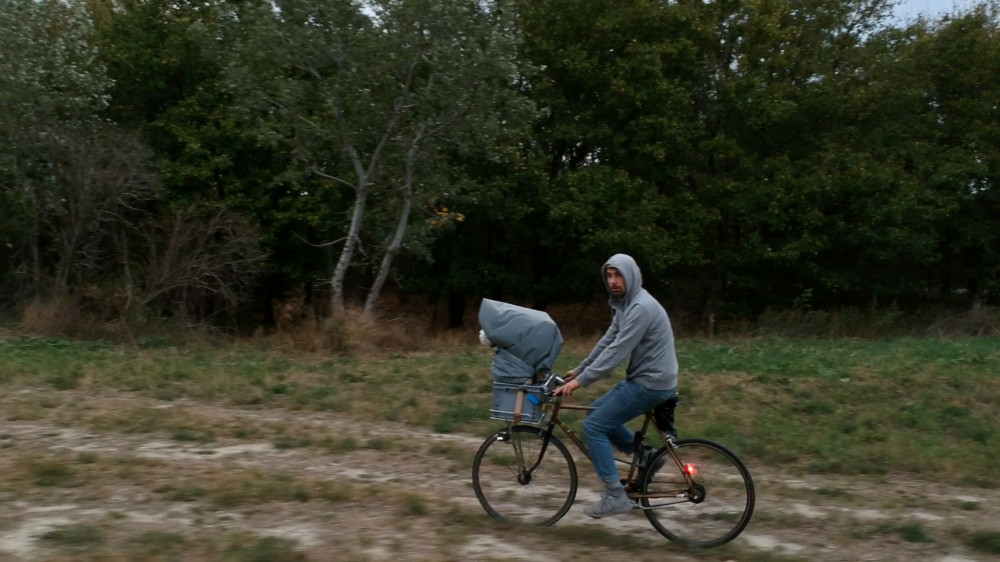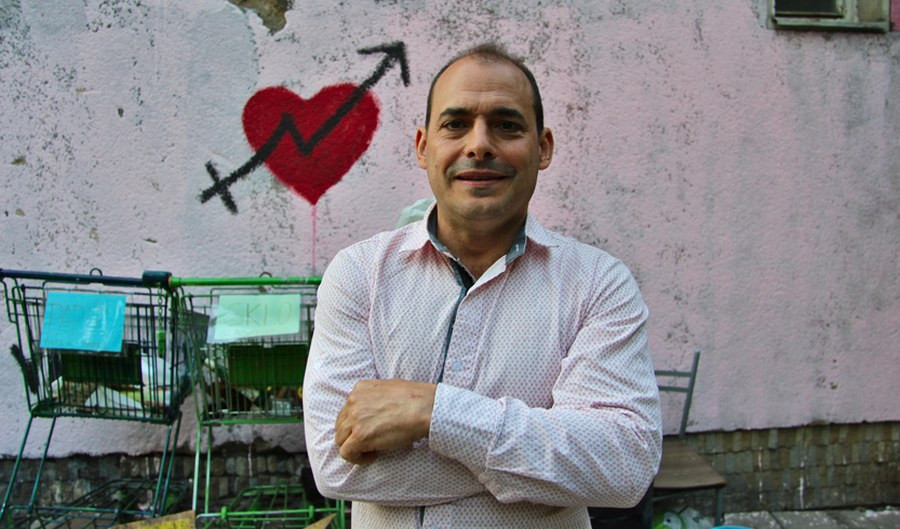Extra-Terrestrial Ecologies, FAMU and Bonano
BETWEEN THE SEAS
Extra-Terrestrial Ecologies

What do Shelley’s Frankenstein, Spielberg’s E.T., and the research facility Biosphere 2 have in common? Multimedia artist Ralo Mayer explores this question in his documentary, Extra-Terrestrial Ecologies. By combining his own research in both ecology and technology, clips from popular science fiction films, and documentary footage from Biosphere 2, he touches on the child-like wonder that lives in all of us.
A curious collection of media and narration brings this film to life. In choosing to show clips from popular science fiction movies followed by his own interpretation of the relation between them and the very real experimentation in Biosphere 2, Mayer creates a space for us to wonder. Most definitely based on his own personal fascination with science fiction, he draws from popular films like E.T, Blade Runner, and Silent Running. Since most film lovers have seen at least a couple of these films, nostalgia is unavoidable. Followed by pensive and occasionally witty commentary by Mayer, nostalgia is successfully transformed into contemplation over the significance of ecology in this context.
This mixture of original and borrowed footage, although at times jarring, is an effective platform for Mayer voice his big questions about Earth and space and the ecology that connects it all. Extra-Terrestrial Ecologies does more asking than answering, making for an overall amusing adventure through time, space, and popular culture. After all, E.T. was an ecologist, right?
FAMU PRESENTS

Whether it be a documentation of the drag process or a moment in history told from an unlikely perspective, FAMU students have certainly wowed us this year. In the FAMU Presents series, students tell a variety of both historically and culturally relevant stories through an impressive array of animation and documentary techniques.
inscenatiOn.1948 utilizes a multi-layered approach to storytelling through ominous narration, skillful puppetry, and a staged theatrical production. Per the initial narration, the viewer is submerged into the world of puppets portraying different historical communist leaders. We are once again submerged into 1948 Czech Republic during the puppets’ play. Within the many layers of this film, some thoughtful commentary on the nature of communism and communist leaders is revealed.
Based on the book, Invasion 1968. The Russian View, Fifty Years Later is a short but sweet tale of a Russian soldier during the 1968 invasion. Through a rather impeccable 3D animation, the soldier recalls the invasion and reflects upon the event in relation to his own life. This critical choice in perspective provides us with an alternative narrative and makes for a very refreshing and introspective look into this moment in history.
The Bark Beetle of Sumava takes us deep into the Czech Bohemian Forest, where the bark beetle is on a growing path of destruction. Sophisticated narration and breathtaking footage interspersed with tasteful animation tells the story of this invasive species, both admiring the beauty in destruction and making known the underlying political context surrounding the issue.
An open conversation with a young man exploring his transsexuality, A Night Out is a is an important dive into the acutely human struggle with identity. A discussion of gender fluidity, bisexuality, and the transformation process that is drag brings two unlikely protagonists together. In the short day they spend together, a raw human connection is made that transcends age, class, and identity itself.
MASTERCLASS
Mike Bonanno: History of Jokes

Mike Bonanno opened his masterclass, “History of Jokes,” explaining that he did not actually know anything about the history of jokes. He then proceeded to make a very funny joke in which he undressed to reveal a tight red sparkly shirt, printed cropped leggings, and a pair of boxers with a euro bill printed on them. He explained that he bought them from a local vendor in Jihlava on his quest to figure out what to talk about in this masterclass. He remained this way for the rest of the class.
Sharing a short Yes Men documentary in which he and his partner posed as representatives of the National Rifle Association to launch and promote a ridiculous campaign called “Share the Safety”, Bonanno was asked by an audience member why the Yes Men have not been arrested yet. He replied, “We didn’t do anything illegal,” and also noted that, “Sometimes you want to get arrested or sued, because that gives you more of a chance to speak.”
He went on to explain that what he does is not at all original, and compared the Yes Men to the archetypal tricksters that have been prevalent in storytelling and campaigns throughout history. Drawing from various campaigns, he used examples like suffragettes dressing in white robes to create a better image as a means to explain what The Yes Men do. He explained one strategies of The Yes Men is promoting the power of dreams by using false momentary authority as a means for promoting the ultimate utopian situation relating to a current political issue. He quickly followed this with some honesty, explaining, “All of the actions that we do are failures that lead to an eventual success (within a larger movement).”
Finishing the talk with a teaser of his most current project concerning walls and fear, Bonanno noted that the strategy had moved towards simplicity because within simplicity, universality can be found. His final word to the audience was, “Next time, you’ll get a real masterclass,” but I have no doubt that every single audience member learned something new from him.


